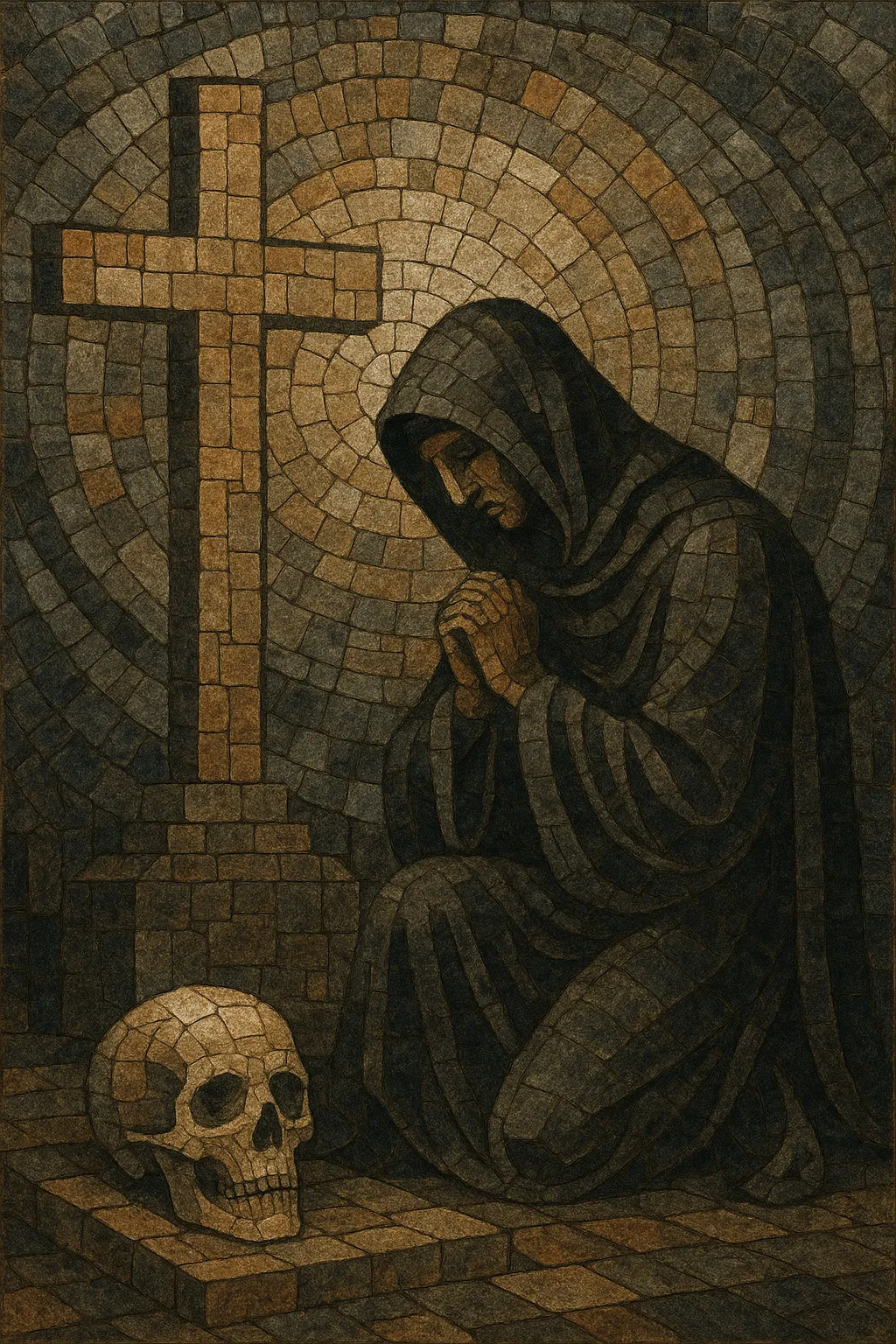A requiem is a musical setting of the Roman Catholic Mass for the Dead (Missa pro defunctis). Historically rooted in Latin liturgy, it sets movements such as the Introit, Kyrie, (historically) the Sequence Dies irae, Offertory, Sanctus, Agnus Dei, and Communion, and often includes additional responsories like Libera me and In paradisum.
While the earliest requiems were monophonic chants, the genre became a showcase for polyphonic and later symphonic choral writing. Renaissance composers wrote austere, modal settings; Classical and Romantic composers expanded the forces and dramatic scope; and 20th–21st century composers reimagined the form with new languages, from neo-modal and impressionistic harmonies to avant‑garde sonorities. Today, requiems appear both in liturgy and as concert works, symbolizing collective mourning, remembrance, and spiritual reflection.
The requiem originates in the Latin rite of the Roman Catholic Church, where the Missa pro defunctis developed as a distinct liturgy with its own chants. For centuries it was sung monophonically (Gregorian chant), setting a contemplative and modal tone for mourning rites.
By the 1460s, composers of the Franco‑Flemish school produced the first surviving polyphonic settings (notably Johannes Ockeghem). Renaissance masters such as Tomás Luis de Victoria crafted solemn, imitative textures that often paraphrased chant and favored modal writing, balancing clarity of text with contrapuntal richness.
In the Classical and Romantic eras, the requiem moved decisively into the concert hall. Mozart’s Requiem fused late‑Classical counterpoint with operatic intensity. Berlioz’s Grande messe des morts and Verdi’s Messa da Requiem brought monumental orchestration, spatial brass, and vivid drama, while Fauré and Duruflé returned to gentler, consolatory aesthetics, the latter explicitly referencing chant. Brahms reframed the genre textually in his German Requiem, emphasizing consolation through vernacular scripture rather than the Latin Mass.
Composers reinterpreted the form against the backdrop of war, memorialization, and modern spirituality. Britten’s War Requiem juxtaposed the Latin Mass with Wilfred Owen’s poetry, integrating tonal, modal, and dissonant idioms. Later works explore minimalism, spectralism, and cinematic orchestration. The requiem remains a flexible vessel for cultural memory—performed liturgically, in concert, and recorded media—often commissioned to mark collective tragedy or anniversaries.
Decide whether to set the traditional Latin movements (Introit, Kyrie, Dies irae, Offertory, Sanctus, Agnus Dei, Communion, plus Libera me/In paradisum) or to adapt/curate texts (e.g., vernacular scripture or poetry). Clarify whether the work is liturgical (organ/choir feasible, suitable length) or a concert requiem (expanded forces, dramatic pacing).
Core forces are SATB choir, soloists (often Soprano, Alto/Mezzo, Tenor, Bass), and either organ or orchestra. For Romantic‑scale drama, add expanded brass (including antiphonal groups), percussion (timpani, bass drum, tam‑tam), and spatial effects. For a more devotional aesthetic, use organ with strings and solo winds, or a cappella choir.
Reference chant (especially in Introit and In paradisum) through paraphrase or cantus firmus. Modal colors (Dorian, Phrygian) evoke historical gravity; in tonal contexts, employ modal mixture, suspensions, and stepwise lament figures. Reserve sharper dissonance and chromaticism for judgmental texts (e.g., Dies irae), and consonant cadences for comfort (Lux aeterna).
Alternate homophonic clarity (to foreground text) with imitative counterpoint for depth. Use syllabic declamation on dense theological lines; save melisma and soaring lines for moments of transcendence. Shape meter and tempo to text—measured tread for processional sections, urgent drive in Dies irae, serene pulse for Lux aeterna.
Plan macro‑contrast across movements: terror/plea (Dies irae/Libera me) versus consolation/repose (Sanctus, Agnus, In paradisum). Employ recurring motives (e.g., a ‘mercy’ motif) for coherence. Consider spatial antiphony (offstage brass/choir) for eschatological effect.
Blend traditional choir with electronics or spectral textures; incorporate world instruments tastefully when textually justified. For filmic or concert appeal, use clear thematic branding (a requiem theme stated in Introit and reprised at the end) and cinematic orchestration that never obscures the words.


